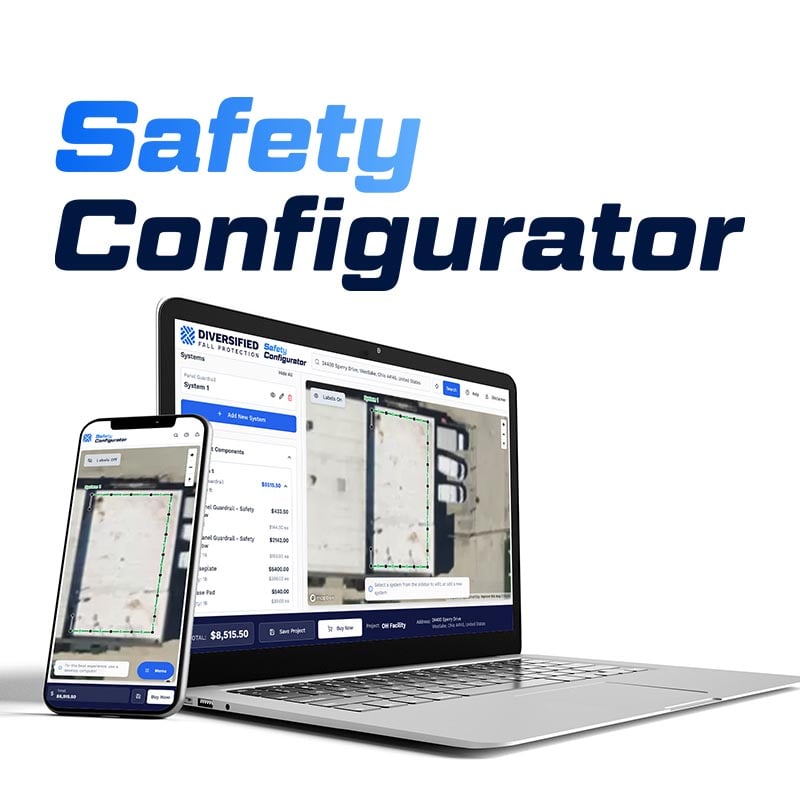Key Differences Between OSHA and ANSI Fall Protection Standards
We sometimes hear from confused clients wondering about the differences between OSHA and ANSI fall protection regulations, standards, and guidelines. Employers have a responsibility for understanding the key differences between these two bodies in order to maintain a safe and compliant workplace. This post seeks to explain some of the differences between OSHA and ANSI, and why understanding the differences between what these two organizations say about fall protection is important.
The Occupational Safety and Health Administration, also known as OSHA, is the division of the US Department of Labor responsible for overseeing workplace safety. Although OSHA fall protection regulations are mandatory and carry the weight of law, they are also ambiguous and infrequently updated. The American National Standards Institute, or ANSI, promotes voluntary safety standards viewed by many as “best-practices.” Put another way, an employer or fall protection equipment manufacturer can legally by-pass ANSI standards, but doing so may compromise worker safety; ignoring OSHA regulations can result in significant fines, incarceration, or both.
The ANSI Z359 Fall Protection Code
ANSI introduced the Z359 fall protection code in the early 90s to promote clear, updated safety standards to fall protection equipment manufacturers and employers. Since this time, the scope of ANSI Z359 has expanded beyond equipment standards (e.g., personal fall arrest systems, anchorage devices, rescue equipment, and self-retracting lifelines, etc.) to include fall hazard identification, personnel training, and requirements for third-party testing. The specific sections of ANSI’s current Z359 Fall Protection Code include:
- ANSI/ASSE Z359.0-2012 – Definitions and Nomenclature Used for Fall Protection and Fall Arrest
- ANSI/ASSE Z359.1-2007 – Safety Requirements for Personal Fall Arrest Systems, Subsystems and Components
- ANSI/ASSE Z359.2-2007 – Minimum Requirements for a Comprehensive Managed Fall Protection Program
- ANSI/ASSE Z359.3-2007 – Safety Requirements for Positioning and Travel Restraint Systems
- ANSI/ASSE Z359.4-2013 – Safety Requirements for Assisted-Rescue and Self-Rescue Systems, Subsystems and Components
- ANSI/ASSE Z359.6-2009 – Specifications and Design Requirements for Active Fall Protection Systems
- ANSI/ASSE Z359.7-2011 – Qualification and Verification Testing of Fall Protection Products
- ANSI/ASSE Z359.12-2009 – Connecting Components for Personal Fall Arrest System
- ANSI/ASSE Z359.13-2013 – Personal Energy Absorbers and Energy Absorbing Lanyards
- ANSI/ASSE Z359.14-2012 – Safety Requirements for Self-Retracting Devices For Personal Fall Arrest and Rescue Systems
Many of ANSI’s recommended “best-practices” relating to fall arrest equipment and PPE fill the obvious voids in OSHA’s fall protection regulations. For example, you won’t find specific OSHA guidelines addressing recertification schedules for engineered fall protection systems or weight ratings for specific PPE items such as lanyard systems; OSHA simply defers to manufacturer guidelines in these instances. OSHA does have the power to regulate the workplace and enforce safety standards, but the organization lacks ANSI’s mission scope which includes testing of fall protection equipment and PPE to ensure worker safety.
Earlier in this post we mentioned ANSI fall protection standards are evolving over time, but as employers, what should we do with older equipment meeting previous ANSI standards? As a recent article in Occupational Health and Safety suggests, “This is not to say equipment that meets older standards is inherently unsafe. Equipment that meets newer standards is safer because it reflects design and application changes based on updated testing and feedback on usage.” When purchasing new fall protection/rescue equipment or PPE, verify that each item complies with the latest ANSI standards.
With the various roles of OSHA and ANSI well-defined, it is easy to see how both organizations use their respective missions to create a safer workplace. By following OSHA fall protection regulations and selecting equipment that complies with ANSI standards, you can achieve a safe and compliant workplace for your employees. If you have additional questions regarding OSHA fall protection regulations or ANSI fall protection standards, contact Diversified Fall Protection for more information.
Schedule an assessment with Diversified Fall Protection
Contact Us to request a fall safety review

b-1.jpg?width=1368&height=1340&name=Rail%20(175)b-1.jpg)

